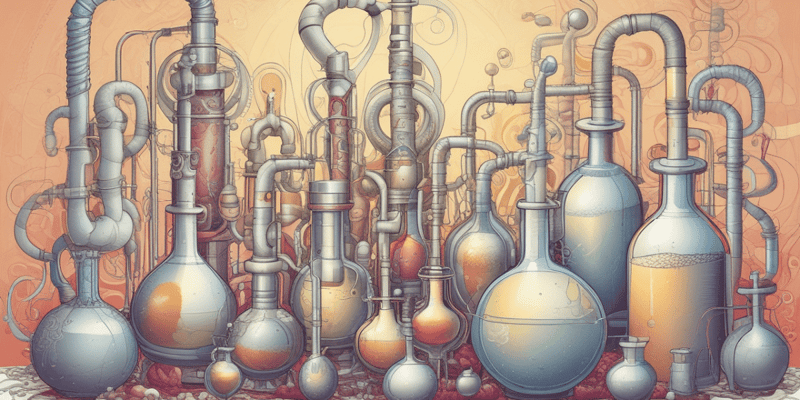Podcast Beta
Questions and Answers
What characteristic of diatoms is described in the content?
What type of starch is indicated as having a rounded appearance in the content?
Which of the following does NOT represent a form of starch mentioned in the content?
What feature distinguishes Chalk from Kieselguhr and Talc according to its description?
Signup and view all the answers
In terms of structure, how are the frustules of diatoms described?
Signup and view all the answers
Which starch has a gritty touch?
Signup and view all the answers
What is the physical appearance of all listed starches?
Signup and view all the answers
Which of the following starches has a polyhedral shape?
Signup and view all the answers
Which starch is obtained from the stem tubers of Solanum tuberosum?
Signup and view all the answers
What is the result of the iodine test for all the listed starches?
Signup and view all the answers
Which of the following substances is used for dusting powders and is odorless and tasteless?
Signup and view all the answers
What type of granules are all the starches classified as?
Signup and view all the answers
Which family does Wheat Starch belong to?
Signup and view all the answers
Which starch is noted for having a distinct hilum?
Signup and view all the answers
What is the taste characteristic of Rice Starch?
Signup and view all the answers
Study Notes
Starches
-
Potato Starch:
- White, odourless, starchy, smooth to the touch
- Bluish violet colour with iodine test
- Large, oval, rounded, triangular, or pyramidal shape
- Distinct, eccentric, pointed hilum
- Distinct, concentric striations
- Simple, compound, or semi-compound aggregations
- Polysaccharide granules obtained from the stem tubers of Solanum tuberosum
- Belongs to the Solanaceae family
-
Wheat Starch:
- White, odourless, starchy, smooth to the touch
- Bluish violet colour with iodine test
- Medium, rounded, oval, lenticular from a side view shape
- Faint, centric, pointed (linear in side view) hilum
- Faint, concentric rings
- Mostly simple, rarely compound aggregations
- Polysaccharide granules obtained from the endosperm of the grains of Triticum vulgare
- Belongs to the Gramineae family
-
Maize Starch:
- White, odourless, starchy, smooth to the touch
- Bluish violet colour with iodine test
- Medium, polyhedral with rounded angles shape
- Distinct, centric, cleft, or fissured hilum
- Absent striations
- Mostly simple, rarely compound aggregations
- Polysaccharide granules obtained from the endosperm of the grains of Zea mays
- Belongs to the Gramineae family
-
Rice Starch:
- White, odourless, starchy, gritty to the touch
- Bluish violet colour with iodine test
- Small, polyhedral with sharp angles shape
- Absent hilum except in large simple granules
- Absent striations
- Mostly simple, rarely compound aggregations
- Polysaccharide granules obtained from the endosperm of the grains of Oryza sativa
- Belongs to the Gramineae family
Non-Starches
-
Kieselguhr:
- White, odourless, tasteless, smooth to the touch
- No confirmatory chemical tests
-
Microscopical examination:
- Frustules, each consisting of 2 valves having sculptures. Fine transparent plates, with various shapes & sizes, with sharp jagged, and laminated edges. Aggregated or scattered.
- Frustules can be found in:
- Pinnate form
- Discoid form
- Honey-comb form. Kieselguhr (Diatoms)
-
Talc:
- White, odourless, tasteless, soapy to the touch
- No confirmatory chemical tests
-
Microscopical examination:
- Micro (light) and macro (heavy) crystals of different shapes and sizes are found
-
Chalk:
- White, odourless, chalky taste, smooth to the touch
- Dilute HCl test: Effervescence & evolution of CO2
- Microscopical examination: Not mentioned
Studying That Suits You
Use AI to generate personalized quizzes and flashcards to suit your learning preferences.
Related Documents
Description
This quiz covers the characteristics of various starches, including potato, wheat, and maize starch. You will learn about their physical properties, botanical origins, and classification in the plant kingdom. Test your knowledge on the composition and usage of these essential polysaccharides.




